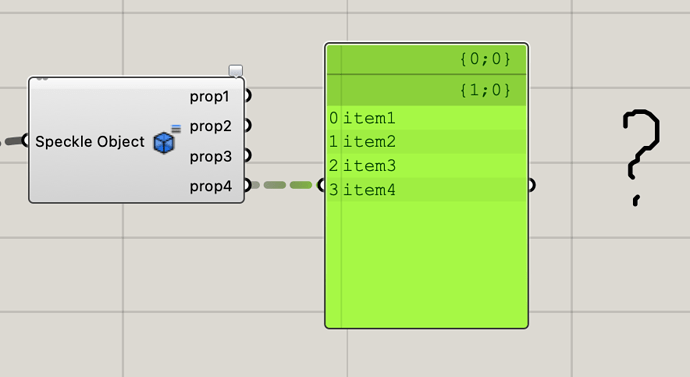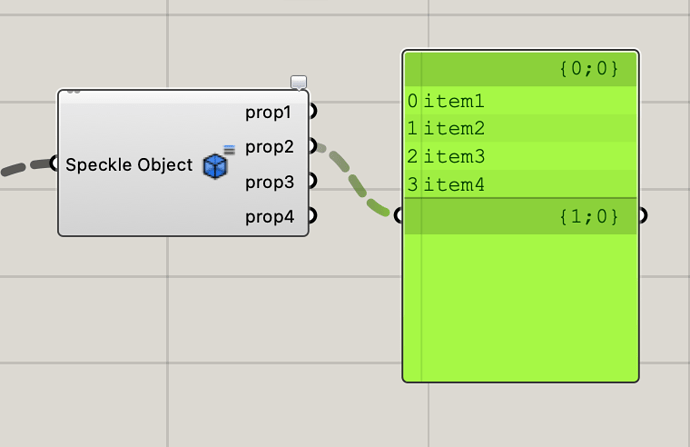Hey @Mykyta_Onopko!
First of all, welcome to the community! Feel free to Introduce yourself 🙆 to everyone if you haven’t already 
As for your question, I think its working just as expected. The result of the CSO by Key/Value is 2 Speckle objects, each with different properties:
- One with 2 properties (
prop1andprop2) - A second one with 2 properties (
prop3andprop4)
If you expand each of them individually you’ll notice that each object has been correctly created (note that in my example I did expand them this way).
I think the confusion comes from the fact that Expand Speckle Object will expand all properties of all input objects, and will properly assign each output accordingly.
So what you’re seeing in the screenshot bellow is the following:
Since the first object does not have a prop4 (only prop1 and prop2), the branch {0} remains empty.
The same happens if you inspect prop1 or prop2, since the second object has none of those properties branch {1} will remain empty.
Hope that makes sense! 

